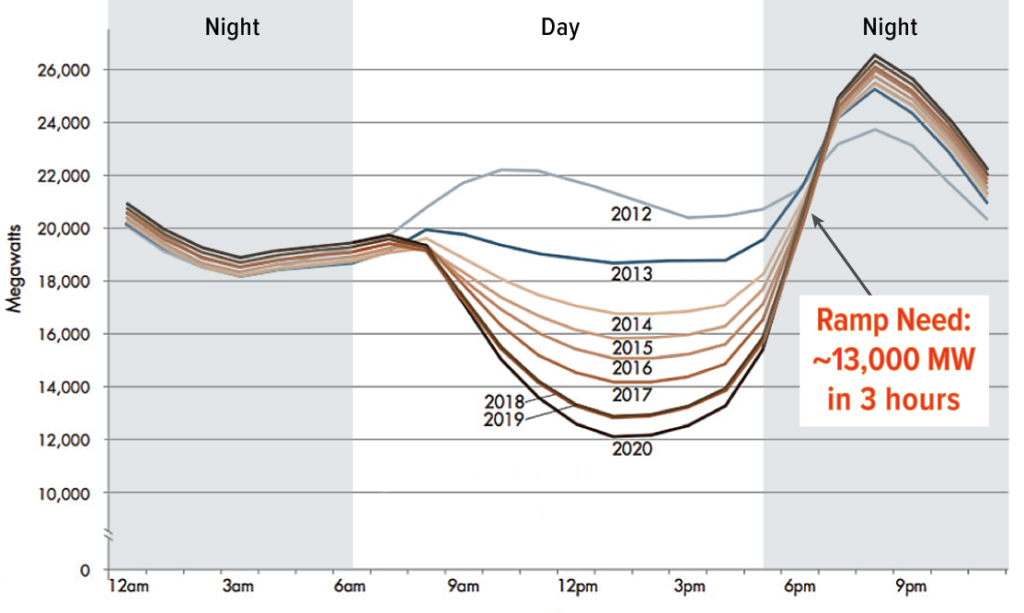Let’s ensure California meets its goal:
60% renewable energy by 2030
Policymakers need solid information for the fight against climate change.
The existential stakes are clear. That’s why on February 12, 2021, The Center for Community Energy (CCE) is holding a virtual conference: Can Electric Vehicles Power the Grid After Sundown? The conference brings together experts from the U.S. and abroad. After the conference, they will produce a consensus document to submit to the PUC and others describing the potential of electric vehicle-to-grid energy production in combating climate change.

The Problem
California has a surplus of renewable energy during the day and a lack of renewable energy at night, when demand is greatest. This energy imbalance forces the state to:
• Limit solar energy mid-day, when demand is low
• Operate fossil-fuel plants in the evening to meet high demand
• Continue to operate fossil-fuel plants for decades to come
So-called because it’s shaped like the back of a duck, this graph illustrates how a surplus of solar power during the day and a shortage of renewable power in the evening creates an energy imbalance and added energy costs.
As you can see, renewables in 2020 produce so much energy that fossil-fueled power plants are needed less during the day. But as the sun sets and people get home from work and turn on energy consuming devices of all kinds, fossil-fueled power plants are rapidly brought online to meet a 13,000 megawatt need.
Fossil Fuel Demand in Excess of Renewable Production

Eliminating the “Duck Curve” with Electric Vehicle-toGrid (EV2G) Energy Distribution
California has set a target of 5 million electric vehicles on the road by 2030. Studies show that electric vehicles can effectively upload energy to the power grid at night. If a fraction of the energy stored in those electric vehicles were uploaded to the power grid in the evening, it could eliminate the energy imbalance.
• The state of CA has a goal of 5 million electric cars by 2030
• Assume they have the battery capacity of a Tesla 3— 75kWh
• Assume they can only charge/discharge via a level 2 charger
• Their available power would be 37,000 MW

Unfortunately, the California Public Utilities Commission (CPUC) does not include vehicle-to-grid electrical distribution as a potential alternative to other power sources in the Interim Resource Plan currently being considered. This will influence the future of power plants in California and the state’s global leadership for decades.
Virtual Conference Experts are Prepared to Make the Case
Our goal is to present the CPUC with electric-vehicle-to-grid models for comparison to various power sources.
Enable a clean electricity
grid at a substantially
lower capital investment
Avoid the cost of
supporting renewables
with peaker plants
Further speed the
growth of clean
vehicle adoption
We Need Your Immediate Support
Our conference report will be used to convince policymakers that electric vehicles can become an important part of the solution for creating a clean electricity grid, and one of the best ways to help reduce greenhouse gases.
Your donation helps make it possible for CCE to organize and present this important scientific conference. Your generosity will also facilitate work on the consensus document detailing the benefits of advanced vehicle-to-grid energy distribution.
In order to present unbiased recommendations to policymakers, corporate contributions will not be accepted, so support from individual donors is especially important. The Center for Community Energy is an IRS recognized 501(c)3 non-profit. All donations are tax-deductible.



